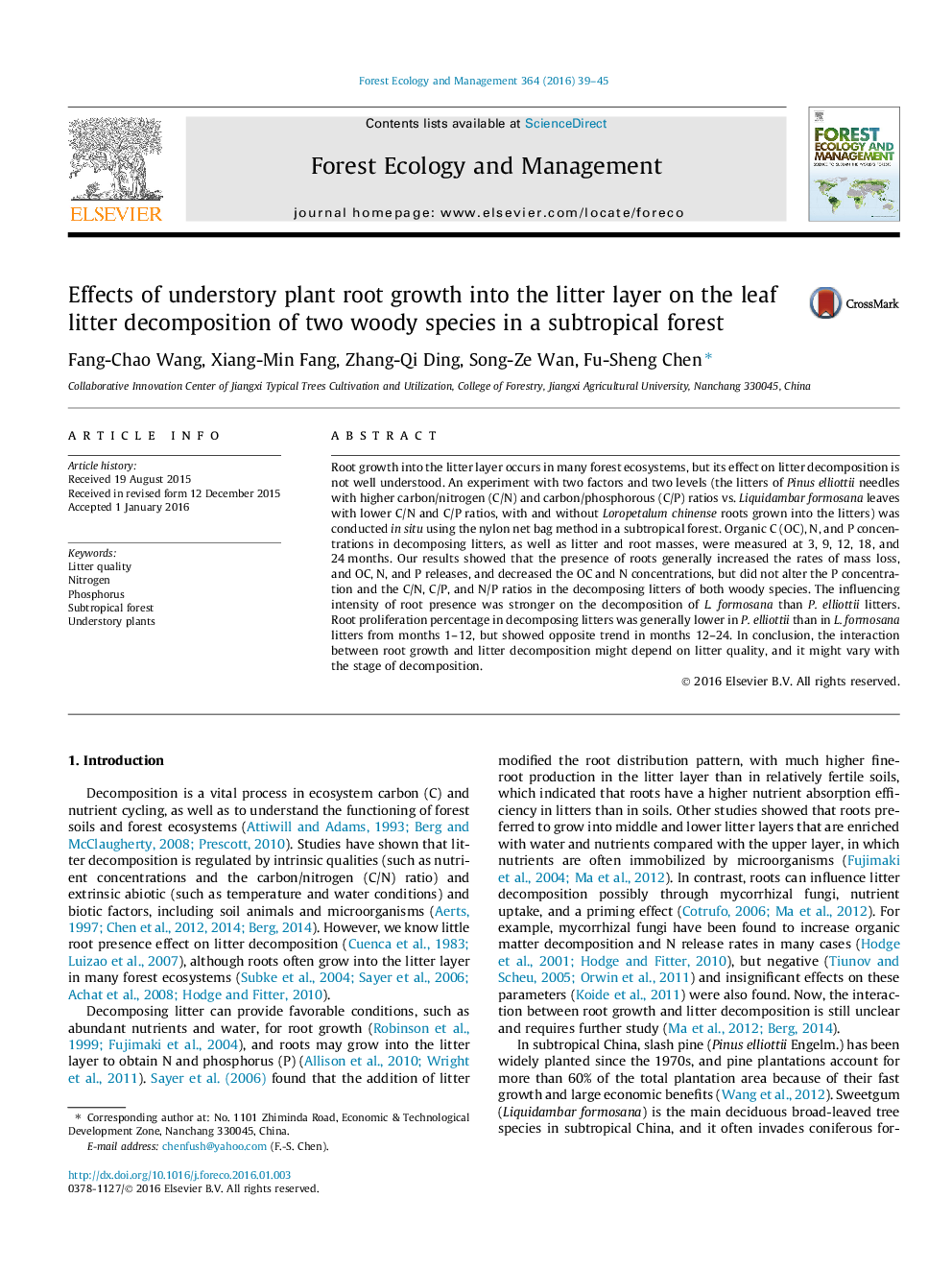| Article ID | Journal | Published Year | Pages | File Type |
|---|---|---|---|---|
| 6542377 | Forest Ecology and Management | 2016 | 7 Pages |
Abstract
Root growth into the litter layer occurs in many forest ecosystems, but its effect on litter decomposition is not well understood. An experiment with two factors and two levels (the litters of Pinus elliottii needles with higher carbon/nitrogen (C/N) and carbon/phosphorous (C/P) ratios vs. Liquidambar formosana leaves with lower C/N and C/P ratios, with and without Loropetalum chinense roots grown into the litters) was conducted in situ using the nylon net bag method in a subtropical forest. Organic C (OC), N, and P concentrations in decomposing litters, as well as litter and root masses, were measured at 3, 9, 12, 18, and 24Â months. Our results showed that the presence of roots generally increased the rates of mass loss, and OC, N, and P releases, and decreased the OC and N concentrations, but did not alter the P concentration and the C/N, C/P, and N/P ratios in the decomposing litters of both woody species. The influencing intensity of root presence was stronger on the decomposition of L. formosana than P. elliottii litters. Root proliferation percentage in decomposing litters was generally lower in P. elliottii than in L. formosana litters from months 1-12, but showed opposite trend in months 12-24. In conclusion, the interaction between root growth and litter decomposition might depend on litter quality, and it might vary with the stage of decomposition.
Related Topics
Life Sciences
Agricultural and Biological Sciences
Ecology, Evolution, Behavior and Systematics
Authors
Fang-Chao Wang, Xiang-Min Fang, Zhang-Qi Ding, Song-Ze Wan, Fu-Sheng Chen,
